
Most scientific discoveries are the result of painstaking, focused and incredibly complex work, the purpose of which is reduced to one single task- to make a breakthrough in a particular area. But history is full of instances when incredible discoveries were made, scientists when their gaze is completely in the opposite direction.
Sometimes important discoveries happen completely at random. Take for instance the development of a drug to improve blood flow to the myocardium and treatment of angina and coronary heart disease. For the heart this medicine has been shown in clinical trials proved almost useless, but it came to light sildenafil, better known as Viagra now. Opening the same saccharin – an artificial sweetener – was the result of fatigue and, possibly, in simple forgetfulness of the Russian Professor of chemistry to wash your hands before eating.
In most cases, the researchers behind such discoveries would not call them truly random, because before that people often spent a lot of sleepless nights and analyzed a huge mountain of scientific information – all in order to really make a discovery, though not what happened in the end.
The desire to understand how one or another new product, also often contributes, as it did with the inventor of a special substance, intended to clean walls with soot. Just simple curiosity and a desire to change one ingredient to the other is embodied in a very interesting and highly profitable invention of plasticine.
You should also understand that none of this changed the world of “accidental” inventions would not have been possible without the presence of someone who would be able to promptly see the potential and value of the discovery. And yet history shows that the best innovations can come into this world in the most unexpected moment.
Microwave
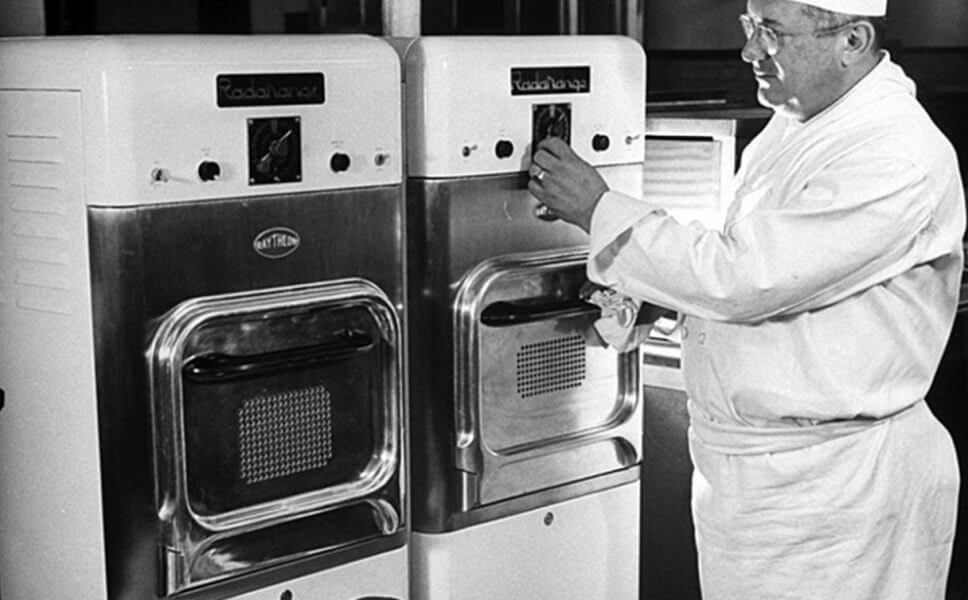
The engineer of the company “Raytheon”, Percy Spencer, is engaged in the manufacture of equipment for radar, in 1945, made one of the most important for this world discoveries. He found that microwave radiation can heat things. Legends about how he figured it out, there are a few. According to one of them, one day he accidentally left in his pocket a chocolate bar and started to work with the magnetron, and a few minutes later was surprised to feel the chocolate in his pocket started to melt. Trying to figure out what it was, Spencer decided to experiment with other products: eggs and grains of corn. From what he saw he concluded that the cause of the observed is microwave radiation.
Anyway, in 1946, Spencer received a patent for the first microwave. The first microwave the “Radarange” was released in 1947, the same firm where he worked. But it was intended not for cooking, but for a quick defrost, and used exclusively by the military. Her height was 168 cm, weight — 340 kg, power — 3 kW, which is approximately twice the power of modern domestic microwave ovens. Microwave for the military was worth $ 3,000. In 1965 she published her household option, which was sold for $ 500.
Quinine
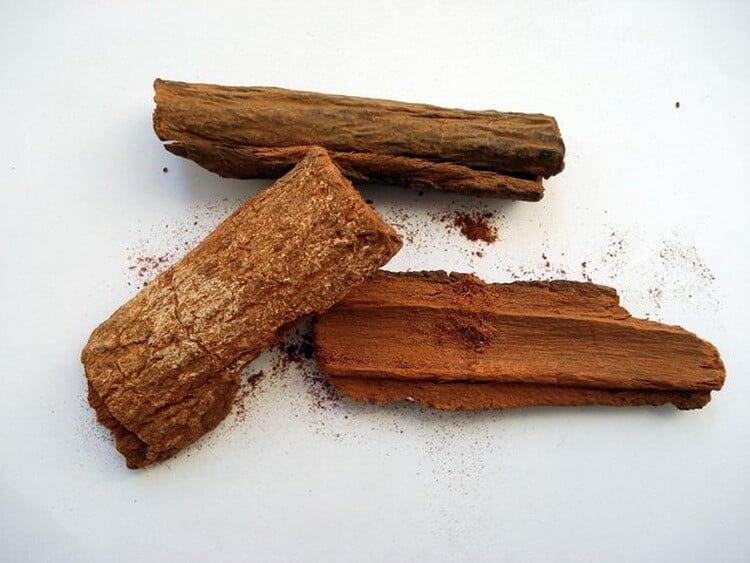
For a long time quinine was used as the main means of treatment of malaria. Now it can still be found as a component of drugs against malaria, and as an additive in various soft drinks.
The Jesuit missionaries used the quinine from the beginning of 1600 years, having discovered it in South America and later brought to Europe, but according to one legend, the use of this substance for the treatment of disease practiced by the representatives of the Andean civilizations is still early, and the discovery of quinine, and in particular its properties, often associated with a case of luck.
One of the legends says about one the Andean inhabitant lost in the jungle and suffering from malaria fever. Completely exhausted from thirst, he drank from puddles of water, located at the foot of the Cinchona tree. Bitter taste of water at first very scared person. He thought that drinking something that will further aggravate his condition. But, fortunately, it all happened quite the opposite. After a time the fever retreated, the man could find his way home and share the story about the amazing tree.
This story is not as well documented as the same as the official version of the missionary bernabé Cobo, who brought the Indians received from quinine to Europe and treated them the wife of the Viceroy of Peru, but we just couldn’t ignore interesting legend about luck, which subsequently changed the world.
X-rays
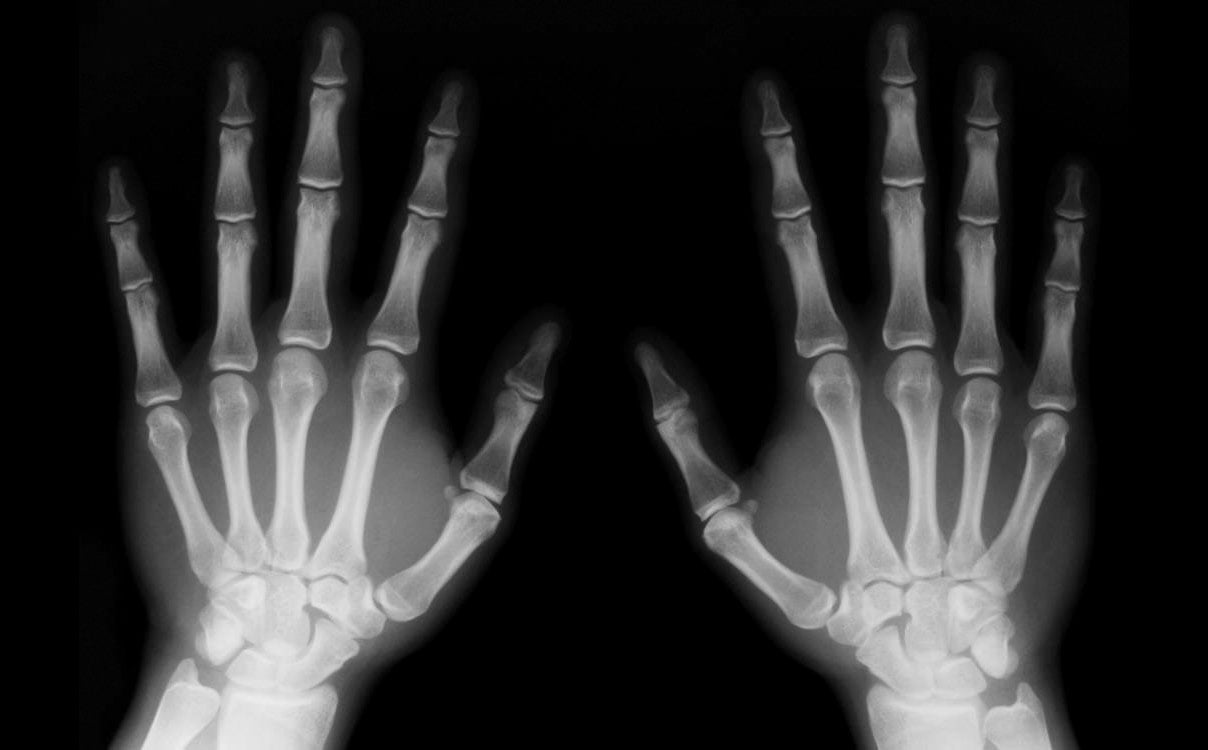
In 1895, German physicist Wilhelm Roentgen was working with cathode-ray tube. Despite the fact that the tube was shielded, Roentgen noticed that a cardboard coated with barium platinocyanide and near the tube began to glow in a dark room.
X-ray tried to block the rays, but most of the things he put in front of them, showed a similar effect. When in the end he put in front of the tube my hand, I noticed that she was starting to show through on the image projected on the screen. His discovery he called “x-rays” (X-rays). After the x-ray tube replaced the photographic plate and obtained the first radiograph.
Soon after, the technology has been adapted by medical institutions and research laboratories. However, the danger of prolonged exposure to x-rays, scientists had yet to understand.
Radioactivity

Radioactivity was discovered in 1896 by the French physicist A. Becquerel. He was engaged in the study of the relationship of luminescence and recently discovered x-rays.
Becquerel decided to find out, whether is not accompanied by any luminescence under x-rays? To check his hunch, he took a few compounds, including one of the uranium salts, phosphorescent yellow-green light. Illuminating it with sunlight, he wrapped the salt in black paper and put in a dark closet on a photographic plate, also wrapped in black paper. After some time, showing the plate Becquerel saw the image of a piece of salt. But fluorescent radiation could not pass through black paper and only x-rays could in these circumstances to light the plate.
After several similar experiments, using uranium salts, he realized that the opening of new rays that pass through opaque objects, but are not x-ray.
Becquerel found that the radiation intensity is determined only by the amount of uranium and does not depend on what connections it enters. Thus, this property was not inherent in the compounds, and chemical element uranium.
Velcro
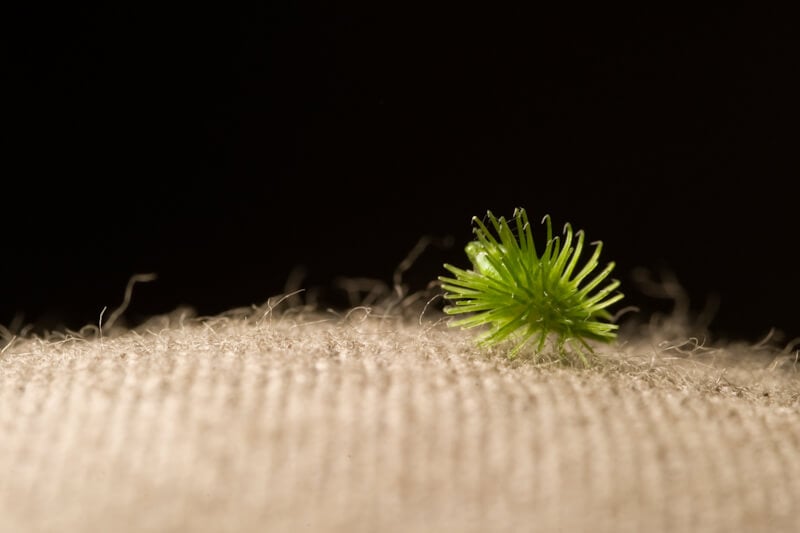
In 1941, Swiss engineer Georges de Mestral dock decided to take a walk in the Alps with his dog. Upon returning home, he, as usual, began to clean animal hair from the heads of thistles. But this time I decided to see how they look under a microscope. As it turned out, each head had tiny hooks with which they cling to animal fur and clothing.
The engineer did not plan to invent a new system of fasteners, but after seeing how easy and hard hooks to cling to fabric and fur, he still could not resist the temptation. Through years of trial and error he realized that the most suitable material for the creation of Velcro is nylon.
Velcro became very popular shortly after the technology was adapted aerospace Agency NASA. Later, Velcro became widely used in the manufacture of casual clothing and footwear.
Saccharin

Saccharin is an artificial sweetener that is about 400 times sweeter than sugar. It was opened in 1878, a German chemist of Russian origin Konstantin Vallberga the Johns Hopkins University. Falberg, and the head of the American Professor Ira Remsen of the study were derived bitumen (coal tar).
After a long day in the lab, Fahlberg forgot to wash my hands before dinner. He picked up the bread and bit into a piece, the scientist has noticed that he has a sweet taste, as, indeed, the rest of the food to which he touched with his hands.
He returned to the lab and began experimenting by mixing different components, yet eventually found that the combination of ortho-sulfobenzoic acid with phosphorus chloride and ammonia is obtained a substance with the same sweet flavor (it should be noted that the practice of trying random chemicals to the taste is not typical for scientists).
Falberg patented chemical formula of saccharin in 1884 (not writing to the holder of the patent Remsen, despite the fact that together they had published the first scientific article on this discovery). Widespread artificial sweetener has received during the First world war, when the supplies of sugar in the world was limited.
Tests of the substance showed that it is not absorbed by the body and is not high in calories. In 1907, saccharin as a sugar substitute have been taken by diabetics as a diabetic sweetener or sugar.
Implantable pacemaker

In 1956, American engineer and inventor Wilson Greatbatch engaged in the development of a device that records heart rhythm. Reaching into a box for a resistor that was required to complete the outline of the scheme, he pulled the wrong resistor was larger.
However, by setting this resistor, the engineer found that the circuit emits an electric surge. The frequency of the pulsations gave him the idea about the heart’s rhythm. Greatbatch burned with a desire to create a compact implantable pacemaker. It only remained to find a way to reduce the size of the stimulator, so that he could work.
Two years later he introduced the first implantable heart pacemaker, artificial feeding pulses to stimulate the heart. The device was implanted in the dog. This patented innovation led to the start of production and further development of pacemakers.
LSD

LSD-25 was first synthesized by the Swiss chemist albert Hoffman in 1938, carried out a study of lysergic acid produced by poisonous ergot fungus, parasitic on certain grains. The studied chemicals Hoffman planned to use in the pharmaceutical industry. And, by the way, many of their derivatives are still in it are used.
In 1943, not knowing about the action of the drug, Hofmann accidentally absorbed a quantity of the substance with fingertips, feeling the pronounced effect of anxiety and dizziness, as reported by his assistant.
Returning home, he lay down on the bed and “plunged into a kind of intoxication, characterized by a very active imagination,” as he wrote in his notes. Three days later Hofmann decided the world’s first deliberately make the drug. Here is how he described his feelings after:
“I asked my laboratory assistant, who was informed about the experiment, to take me home. We went for a bike ride, as the car was not due to wartime restrictions. On the way home, my condition began to take on menacing shapes. Everything in my field of view shook and was distorted as if in a distorting mirror. I also had the feeling that we can’t budge. However, my assistant told me later that we were driving very fast. Finally, we arrived home safe and sound, and I could hardly apply to his companion, he called our family doctor and asked for milk from the neighbors. Dizziness and the feeling that I lose consciousness, become by this time so strong that I could no longer stand and had to lie down on the sofa. The world around me now even more appallingly transformed. Everything in the room revolved, and familiar things and pieces of furniture acquired a grotesque and menacing form. They were all in constant motion, as if possessed by an inner anxiety. The woman next door, whom I hardly recognized, brought me milk — in the course of the evening I drank two liters. It was no longer Mrs. R., but rather the evil and insidious witch in a colored mask.
Even worse than these demonic transformations of the outer world, was change how I perceived myself, my inner self. Any effort of my will, any attempt to put an end to the disintegration of the outer world and the dissolution of ‘ me ‘ seemed futile. Some demon possessed me, took control of my body, mind, and soul. I jumped up and screamed, trying to break free from him, but then fell and lay helplessly on the sofa. The substance that I’ve wanted to experiment, captivated me. It was the demon that scornfully triumphed over my will.”
Clay
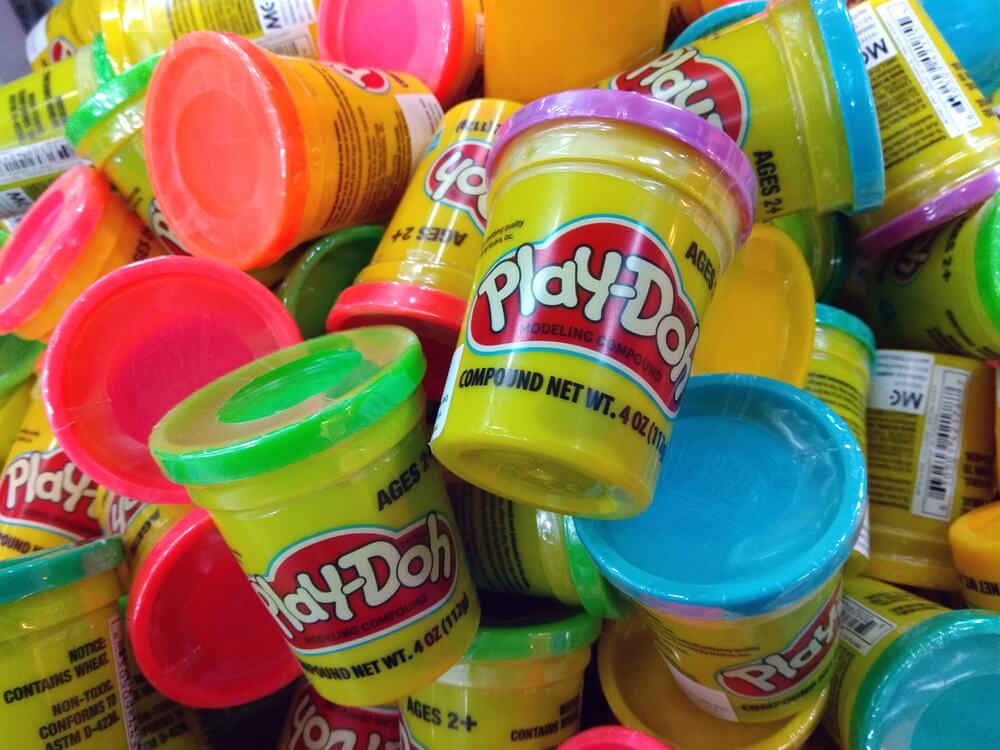
The question of who should be considered the inventor of plasticine, is controversial. In Germany they believe Franz Bulb (patent 1880) in the UK — William Harbut (patent 1899). There is another version of the creation of clay, under which is a substance invented by Noah Mcvicker.
The sticky material was created by Noah Maquiera, who worked at that time with his brother Cleo in the Kutol company, which produced the soap. However, initially manufactured by Maquiera material is not intended as a toy. It is designed as a product for cleaning Wallpaper.
One of the problems which had to face the holders of the fireplaces that heated the house was soot deposited on the walls and ports, Wallpaper. Sticky clay promised a hassle-free cleaning. However, it soon became fashionable vinyl Wallpaper, which could be a simple wash with a sponge soaked with water and cleaning clay has become irrelevant.
When Macvicar was about to go out of business, they received a new idea proposed by a kindergarten teacher named Kay Zufall who noticed that the material is changing shape and it can be used for modeling. Through common relatives, she said about this idea Noah Macvicar. That, in turn, decided to remove from the material of the detergent component and added a dye. The original name of the new material “Kutol”s Rainbow Modelling Compound” decided to replace the proposed Key version of “plasticine”.
Penicillin
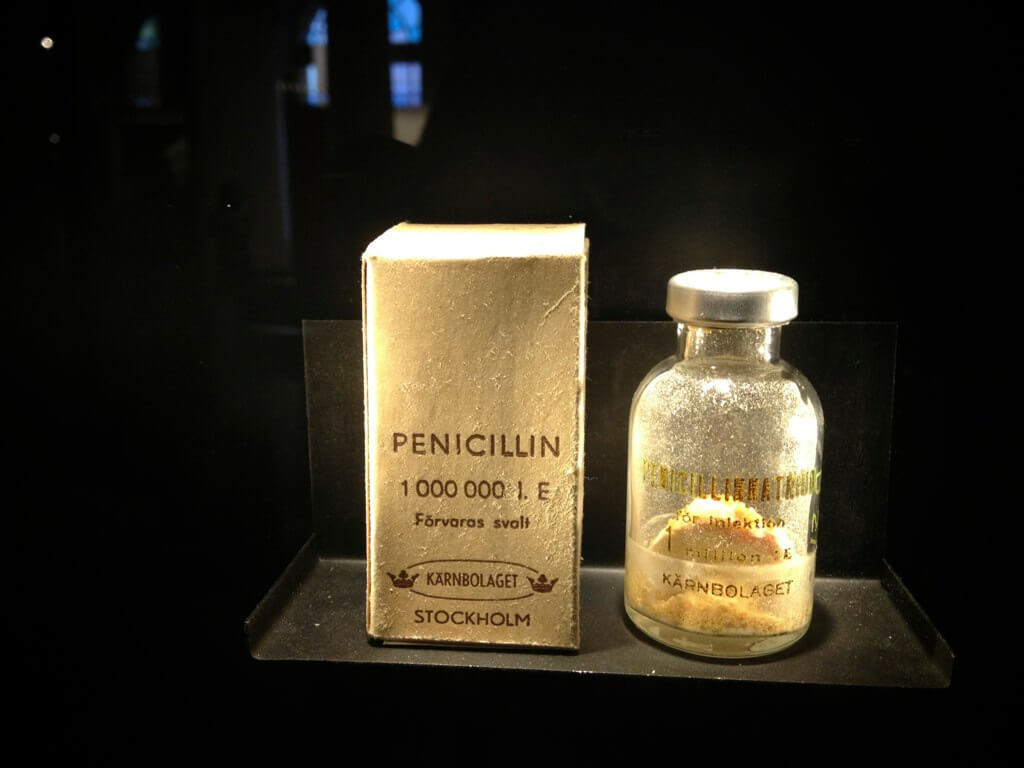
“When I woke up at dawn on September 28, 1928, I certainly didn’t plan a revolution in medicine with his discovery of the world’s first antibiotic, or bacteria killer. But I guess that’s what I did.”
In 1928 sir Alexander Fleming, Professor, bacteriologist, he returned to his laboratory after a month of vacation with his family, found that in one of his Petri dishes appeared fungi, which destroyed previously in her colonies of staphylococci, but did not touch other cultures.
Fleming took the mushrooms that grew on the plate with his crops, the genus penicilloic and a few months later called the selected substance penicillin. But as Fleming was not a chemist, he was not able to extract and purify the active material.
About his discovery, the scientist wrote in 1929 in the British journal of Experimental Pathology, but his article has received little attention. Until 1940, Fleming continued his experiments, trying to develop a method for quick selection of penicillin, which could be used in the future for larger applications.
For the first time penicillin was used for treatment of humans by British scientists Howard Florey and Ernst chain, February 2, 1941, which marked the beginning of the era of antibiotics.
Viagra

Viagra was the first drug to treat erectile dysfunction, but initially it was designed not to do so. Its Creator is the American company Pfizer that developed the drug sildenafil, on the idea intended for treating heart.
However, during clinical trials it was found that the influence of the drug on cardiac blood flow is minimal, however, it has a pronounced effect on the blood flow in the pelvic organs, accompanied by a longer and stronger erection in men. Even in those cases when people do not remember when they last time she was. So there Viagra.
Additional Pfizer clinical trials involving 4000 men with erectile dysfunction showed a similar result of the effectiveness of the drug.
Insulin
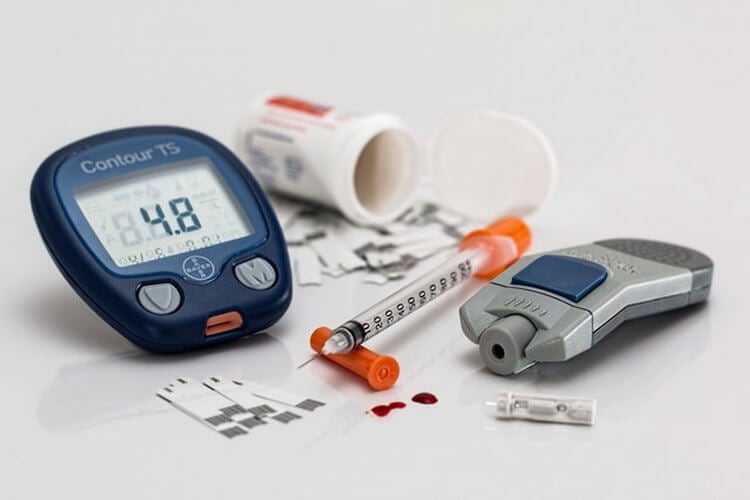
A discovery that later allowed the invention of insulin, was a Fluke.
In 1889, two doctors from the University of Strasbourg, Oskar Minkowski and Joseph von Mering, trying to understand how the pancreas affects digestion, removed the organ from a healthy dog. A few days later they discovered that the test subjects urine around the dog going fly, that was a complete surprise.
They analysed the urine and found sugar in it. Scientists realized that its presence is associated with the remote a few days earlier by the pancreas, which led to the fact that the dog developed diabetes.
However, these two scientists have not figured out that the hormones produced by the pancreas, regulate blood sugar. It is found by researchers from the University of Toronto, who in the course of experiments carried out from 1920 to 1922, managed to isolate the hormone later called insulin.
For this revolutionary discovery, scientists from the University of Toronto were awarded the Nobel prize and the pharmaceutical company Eli Lilly and Company, one of the owners I knew one of the scientists began the first industrial production of this substance.
Vulcanized rubber

The inventor of a method of curing believe American Charles Goodyear, who in 1830 attempted to create a material able to remain flexible and durable in heat and cold.
He was treated rubber resin acid, boiled it in milk of magnesia, added different substances, but all his pieces were turned into goo on the first hot day.
The discovery came to the inventor by accident. In 1839, working at a Massachusetts rubber factory, he once dropped on a hot plate a lump of rubber mixed with sulfur.
Contrary to expectation, it did not melt, but rather charred, like leather. In his first patent, he proposed to subject the rubber to the effects of nitrite of copper and Aqua Regia. Subsequently, the inventor discovered that rubber becomes insensitive to temperature effects when adding sulfur and lead.
After thorough testing, Goodyear found the optimal mode of curing: he mixed rubber with sulfur and lead powder and heated the mixture to a certain temperature, the result of which was rubber, which did not change its properties under the influence of the sun, nor under the influence of cold.
Corn flakes

The history of corn flakes begins in the XIX century. The owners of the sanatorium “Battle Creek” in Michigan (USA), Dr. Kellogg and his brother will Keith Kellogg were preparing some kind of dish made from corn flour, but they urgently needed to absent himself on urgent business of the Board.
When they returned, they found that corn flour that was on a strict accounting, a little bit spoiled. But they still decided to cook from flour dough, however the dough is curled, and it flakes and clumps. Brothers from despair fried these flakes, and it turned out that some of them were air, and some got a pleasant crispy texture.
Subsequently, these flakes were offered to patients of Dr. Kellogg as a new dish, and was served to the table with milk and marshmallows they were very popular.
Adding to the sugar cereal, Will Keith Kellogg made them taste more acceptable to a wider audience.
In 1894, the original corn flakes was patented by an American doctor John Harvey Kellogg. In 1906, Kelloge has started mass production of a new type of food and founded his own company.
Teflon

To thank for the invention of Teflon is chemist Roy Plunkett. In 1938, he worked in one of the laboratories of DuPont (DuPont) in the state of new Jersey. At that time, Plunkett studied the properties of freons.
Once he was under strong pressure frozen tetrafluoroethylene, whereby was obtained a waxy white powder, which later demonstrated amazing properties.
Tormented by curiosity Plunkett did some experiments with the new substance and found that the powder is not only heat resistant, but also has low friction properties. In two years already has been the release of new material, and the world knew him under the name “Teflon”.
Superglue
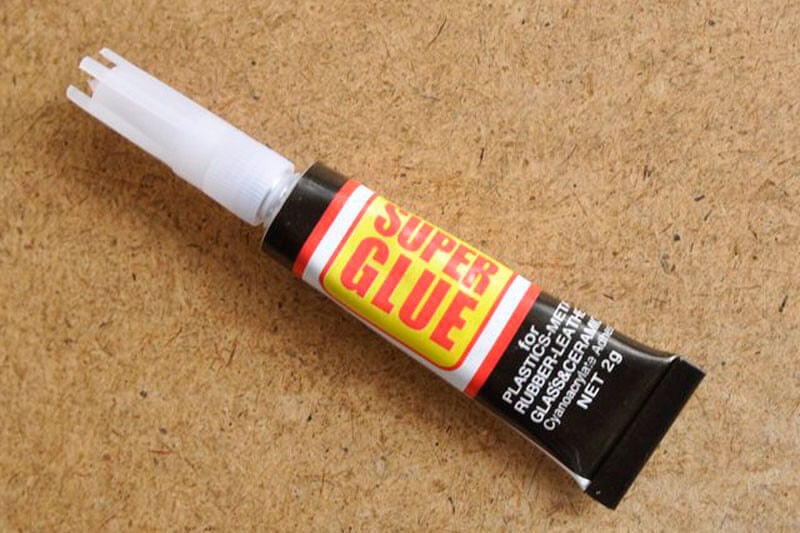
When in 1942 American chemist Harry Coover created a substance that would later be called the “superglue”, he actually experimented with new materials for the scopes in combat arms. However, the substance because of the excessive tack was rejected.
In 1951, American researchers while searching for heat-resistant coatings for cockpits of fighter accidentally discovered a property of cyanoacrylate glue firmly to various surfaces. In 1955, the design was patented and on sale in 1959.
Superglue has long been present in various American talk show, where he revealed his new stunning property.
Cyanocrylate glue could glue any surface, even if they have not been pre-cleaned properly. The main problem with this glue is not to firmly glue the parts, and that they then disconnect.
Impact-resistant glass

Shatterproof glass is widely used in the automotive industry and construction. Today it’s everywhere, but when the French scientist Edouard Benedictus in 1903 accidentally dropped on the floor an empty glass flask and it shattered, he was very surprised.
As it turned out, the flask was stored a solution of collodion, the solution evaporated, but the wall of the vessel remained covered it with a thin layer.
At that time, France was actively developing the automotive industry, and the windshield was made of ordinary glass that was the cause of many injuries of drivers, which is what drew the attention of the Benedictus.
He saw a real benefit to save human lives in the use of his invention in cars, but automakers found it too expensive to produce. Now it is used everywhere.
Vaseline
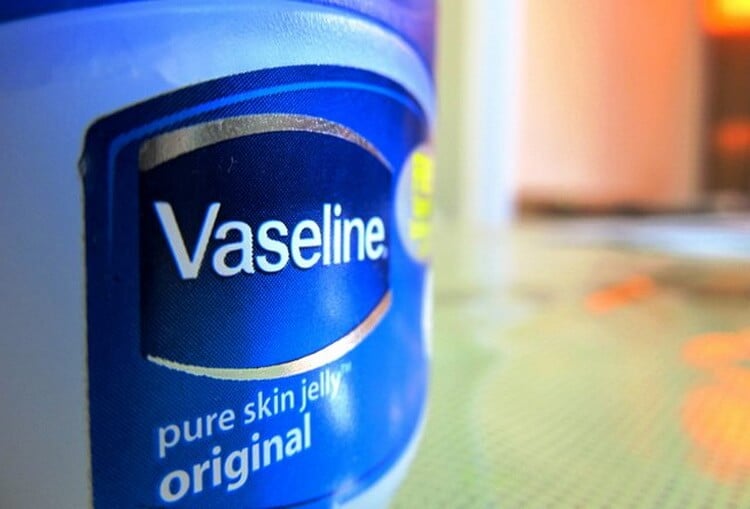
The name “vaseline” was patented in the United States as a trademark and the trademark in 1878. All known cosmetic and therapeutic agent invented and patented emigrated to America the English chemist Robert Chesbro. In this invention the scientist “helped” the oil.
When in 1859 oil boom began, Hasbro dealing with the oil industry, became interested in sticky oil – paraminobenzoic mass, which when the oil stuck to the drilling rigs and clogging the pumps. He noticed that workers constantly use this mass for burns and cuts, as successful wound healing means.
The scientist began to experiment with weight and managed to extract the useful ingredients. The resulting substance he smeared her numerous burns and scars obtained during the experiments.
The effect was striking. The wounds have healed, and quite quickly. In the future, the striking healing ability of this substance Chesbro continued to improve and by trying on himself, watched the result.
18 random scientific inventions and discoveries that changed the world
Nikolai Khizhnyak